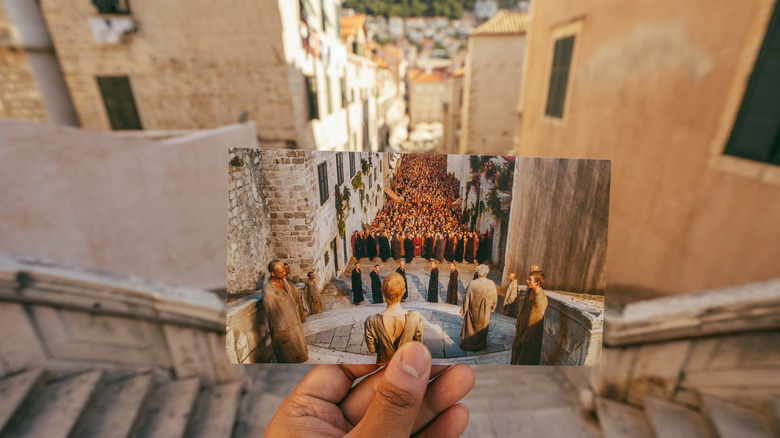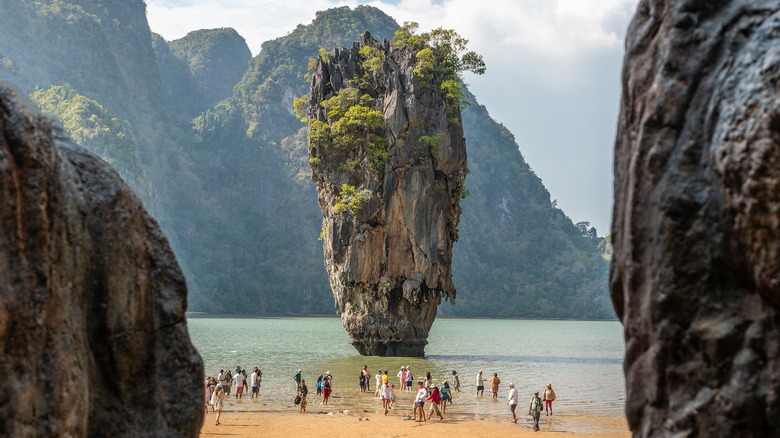Have you ever been so captivated by a film or television show that you felt compelled to travel and visit the locations where it was shot? You’re not alone; this has become a significant trend, with many travelers favoring cinematically-inspired trips by adding Oscar-winning film locations to their itineraries. However, the phenomenon isn’t without its critics. Cameron Hewitt, a Rick Steves tour guide, has expressed a wish that some set-jetting tourists would stay home, highlighting the complexities and consequences of this travel trend.
Although the term set-jetting was coined by New York Post journalist Gretchen Kelly in 2008, the concept is not new. For instance, Thailand’s Khao Phing Kan and Khao Tapu in Phang Nga Bay were featured in the 1974 James Bond film “The Man With The Golden Gun.” Since then, these locations have become renowned tourist destinations, now more popularly known as “James Bond Island.” Do you see the problem?
Cameron Hewitt, a travel writer and tour guide, does. Despite being a thoughtful traveler and a film & TV enthusiast, he still harbors complex feelings about set-jetting. But one thing is clear: He has little patience for those who visit places solely because of their fandom or on-screen associations. This behavior is almost sacrilegious in the context of travel. Per Expedia findings, this phenomenon is becoming more common, especially since streamed movies and TV shows have become the primary source of travel inspiration, accounting for 40% and surpassing the influence of social media at 31%, via PR Newswire.
The cultural and economic impacts of set-jetting

While statistics highlight a noteworthy trend, set-jetting has negative implications — it often leads to a superficial engagement with local culture. Tourists might focus solely on visiting sites from specific scenes to get backdrops for photo-ops, overlooking the broader context of the area altogether. Hewitt shares a concerning example from a friend who is a tour guide in Dubrovnik, Croatia. (The city has seen such a surge in tourism, per EuroNews, 1.5 million in 2019, that local authorities have had to limit the number of visitors to preserve the city’s historical integrity.) This guide often receives requests for exclusive “Game of Thrones” tours that deliberately exclude “that boring history or culture stuff.” Such attitudes underscore how set-jetting can veer into cultural negligence and disrespect.
On the other hand, set-jetting typically helps otherwise overlooked destinations with a boost in income from a broader demographic of visitors. Hewitt himself says he’s seen this happen. However, this benefit often lasts only as long as the show or film remains popular. As a result, significant fluctuations in set-jetting can create economic dependency for these places, potentially causing long-term harm when this influx declines. Take the town of Forks, Washington, which has marketed itself as “Twilight” Town. This quiet, remote American town has become dependent on fans of the Twilight Saga without much else to offer or any sustainable tourism strategy for the future. What happens when all the tourists are gone?
The environmental impact and how to remain a respectful set-jetter

Finally, set-jetting can have serious and sometimes irreversible environmental consequences. As film and TV locations experience an influx of tourists following a project’s success, they face overtourism, which strains local resources and damages natural landscapes. Thailand’s Maya Beach had to close for three years in 2018 thanks to damage to the coral reefs and beach area caused by an unyielding influx of tourism due to the release of “The Beach” in 2000.
Ultimately, it’s okay to be a set jetter, but you still have a responsibility as a traveler. Cameron Hewitt suggests making a key distinction: Is the location I’m seeing on screen “playing itself” or being recognized for its historical or cultural significance in reality? If so, your visit transcends mere set-jetting because you engage with the location’s true nature. However, if the interest is purely fictional, it results in an ignorant disconnect from the cultural and historical reality. An example is Scotland’s Harry Potter pilgrims who flock to ride the Hogwarts Express without acknowledging, or even realizing, that its actual name is the Jacobite Steam Train.
Though it may disappoint traveling fans of pop culture, recognizing the problems associated with their pursuits is crucial. As a set jetter, Hewitt observes that “the best kind of set-jetting is when a piece of pop culture both attracts people to a new place and whets their appetite to learn more.”

